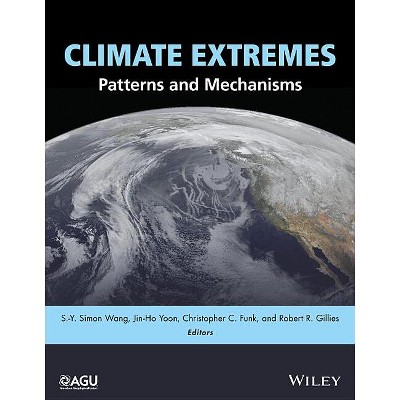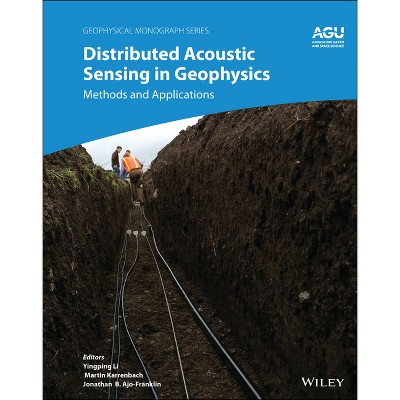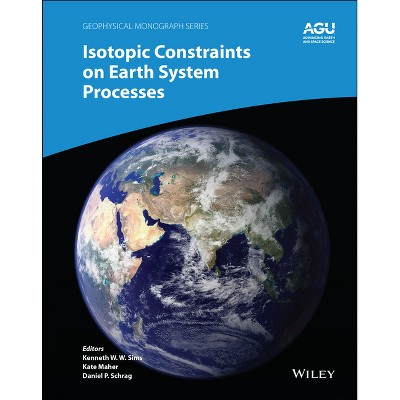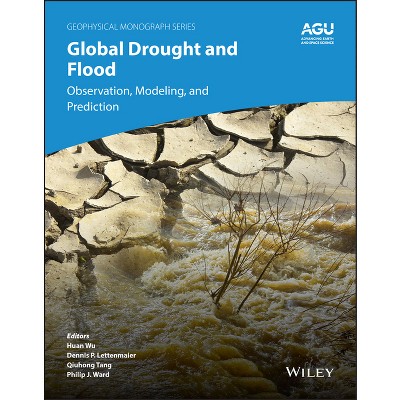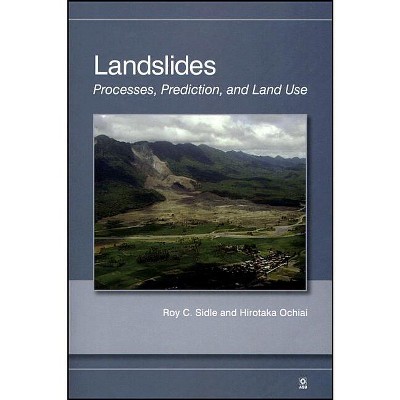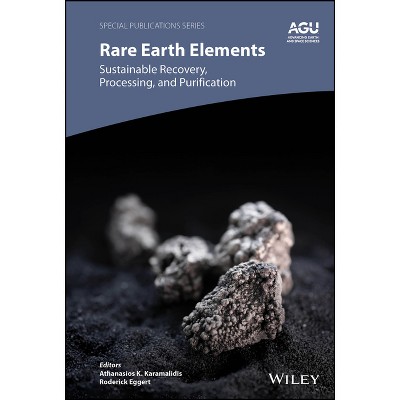El Niño Southern Oscillation in a Changing Climate - (Geophysical Monograph) by Michael J McPhaden & Agus Santoso & Wenju Cai (Hardcover)

About this item
Highlights
- Comprehensive and up-to-date information on Earth's most dominant year-to-year climate variation The El Niño Southern Oscillation (ENSO) in the Pacific Ocean has major worldwide social and economic consequences through its global scale effects on atmospheric and oceanic circulation, marine and terrestrial ecosystems, and other natural systems.
- About the Author: Michael J. McPhaden, NOAA Pacific Marine Environmental Laboratory, USA.
- 528 Pages
- Science, Physics
- Series Name: Geophysical Monograph
Description
About the Book
"Comprehensive and up-to-date information on Earth's most dominant year-to-year climate variation The El Niäno Southern Oscillation (ENSO) in the Pacific Ocean has major worldwide social and economic consequences through its global scale effects on atmospheric and oceanic circulation, marine and terrestrial ecosystems, and other natural systems. Ongoing climate change is projected to significantly alter ENSO's dynamics and impacts. El Niäno Southern Oscillation in a Changing Climate presents the latest theories, models, and observations, and explores the challenges of forecasting ENSO as the climate continues to change. Volume highlights include: Historical background on ENSO and its societal consequences - Review of key El Niäno (ENSO warm phase) and La Niäna (ENSO cold phase) characteristics - Mathematical description of the underlying physical processes that generate ENSO variations - Conceptual framework for understanding ENSO changes on decadal and longer time scales, including the response to greenhouse gas forcing ENSO impacts on extreme ocean, weather, and climate events, including tropical cyclones, and how ENSO affects fisheries and the global carbon cycle - Advances in modeling, paleo-reconstructions, and operational climate forecasting - Future projections of ENSO and its impacts - Factors influencing ENSO events, such as inter-basin climate interactions and volcanic eruptions"--Book Synopsis
Comprehensive and up-to-date information on Earth's most dominant year-to-year climate variation
The El Niño Southern Oscillation (ENSO) in the Pacific Ocean has major worldwide social and economic consequences through its global scale effects on atmospheric and oceanic circulation, marine and terrestrial ecosystems, and other natural systems. Ongoing climate change is projected to significantly alter ENSO's dynamics and impacts.
El Niño Southern Oscillation in a Changing Climate presents the latest theories, models, and observations, and explores the challenges of forecasting ENSO as the climate continues to change.
Volume highlights include:
- Historical background on ENSO and its societal consequences
- Review of key El Niño (ENSO warm phase) and La Niña (ENSO cold phase) characteristics
- Mathematical description of the underlying physical processes that generate ENSO variations
- Conceptual framework for understanding ENSO changes on decadal and longer time scales, including the response to greenhouse gas forcing
- ENSO impacts on extreme ocean, weather, and climate events, including tropical cyclones, and how ENSO affects fisheries and the global carbon cycle
- Advances in modeling, paleo-reconstructions, and operational climate forecasting
- Future projections of ENSO and its impacts
- Factors influencing ENSO events, such as inter-basin climate interactions and volcanic eruptions
The American Geophysical Union promotes discovery in Earth and space science for the benefit of humanity. Its publications disseminate scientific knowledge and provide resources for researchers, students, and professionals.
Find out more about this book from this Q&A with the editors.
From the Back Cover
El Niño Southern Oscillation in a Changing Climate
GEOPHYSICAL MONOGRAPH SERIES
The El Niño Southern Oscillation (ENSO) in the Pacific Ocean has major worldwide social and economic consequences through its global scale effects on atmospheric and oceanic circulation, marine and terrestrial ecosystems, and other natural systems. Ongoing climate change is projected to significantly alter ENSO's dynamics and impacts.
El Niño Southern Oscillation in a Changing Climate presents the latest theories, models, and observations, and explores the challenges of forecasting ENSO as the climate continues to change.
Volume highlights include:
- Historical background and societal consequences of El Niño and La Niña (ENSO warm and cold phases)
- Review of key ENSO characteristics and dynamics
- Conceptual framework for understanding long-term ENSO changes
- ENSO impacts on fisheries, marine ecosystems, global carbon cycle, and extreme events
- Advances in paleo-reconstructions, computer modeling, seasonal forecasting, and future ENSO projections
- Factors influencing ENSO events, such as inter-basin climate interactions and volcanic eruptions
The American Geophysical Union promotes discovery in Earth and space science for the benefit of humanity. Its publications disseminate scientific knowledge and provide resources for researchers, students, and professionals.
About the Author
Michael J. McPhaden, NOAA Pacific Marine Environmental Laboratory, USA.
Agus Santoso, University of New South Wales, Australia.
Wenju Cai, Commonwealth Scientific and Industrial Research Organisation, Australia.






